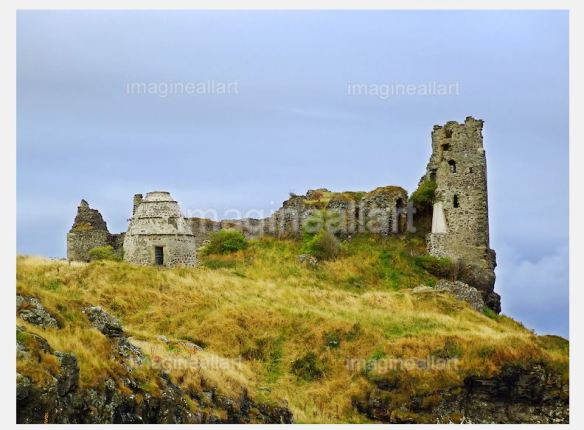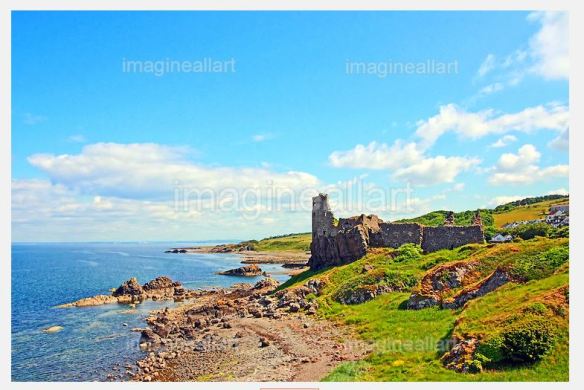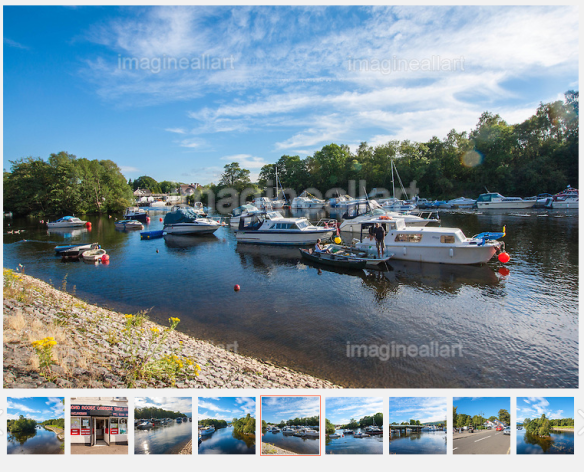Ayrshire is one of my favourite destinations and I strongly recommend visiting the ruins of the castle and Ayrshire in general. When I saw this very old castle for the first time and the place itself I was very impressed. The beautiful beach is full of rocks and there is also a tiny harbour. Additionally, the landscape on the way to Ayrshire is stunning. The best time to come is in the early morning on Spring or Summer day, of course I mean sunny day, which is not that easy in Scotland but to make an effort and get up in the early morning to get there, is worthwhile. The light of the rising sun seen on the fields and hills with the sheep and the sea behind them is breathtaking. I was there many times but only once in the early morning and that was the best time ever.
Dunure Castle is located on the west coast of Scotland, in South Ayrshire, about 5 miles south of Ayr and close to the village of Dunure. Today the castle stands in ruins on a rocky promontory on the Carrick coast, overlooking the small harbour of Dunure.
The site dates from the late 13th century; the earliest charter for the lands dating from 1256, but the remains of the building are of 15th- and 16th-century origin. One tradition is that the castle was built by the Danes and another states that the Mackinnons held the castle from Alexander III as a reward for their valour at the Battle of Largs.
The castle is the point of origin of the Kennedys of Carrick, who once ruled over much of south western Scotland and were granted the lands in 1357. Sir James Balfour described Dunure as a grate and pleasand stronge housse, the most ancient habitation of the surname of Kennedy, Lairds of Dunure, now Earles of Cassiles.
The Celtic name Dunure or Dunoure is said to derive from the “hill” or “fort of the yew tree”.
The castle consisted of two distinct parts; a keep of an irregular shape on the top of a precipitous rock and other buildings at a lower level. The keep walls are about five feet thick and the vaults on the basement are well preserved, however most of the superstructure is entirely demolished. The keep represents the original castle, much altered. The central portion of the castle may be 15th century and was intended to form a defence to the access into the keep. The additional buildings are of a later date and contain two kitchens on the ground level, one for the castle and the other for the retainers. To the north-east stands a detached wall which may have led to a gateway. A drawbridge may have stood nearby and the chapel may have been located against the thick wall of the central part of the castle. A moat or fosse protected the approach and a wall may have also existed.
Beneath the castle is a cavern, called the Browney’s Cave which may have been a sally-port; a secret tunnel leading to the castle.
In 1429 a meeting took place at Dunure between James Campbell, representing King James I of Scotland and John Mor MacDonald, representing the Lord of the Isles. Violence broke out and MacDonald was killed. James I’s efforts to contain the outrage of the Lords of the Isles by executing Campbell did not prevent a subsequent uprising by them. For three days from 4 August 1563, Mary, Queen of Scots, stayed at Dunure Castle on her Royal tour down the west coast to Glenluce Abbey then on to Whithorn Priory. She was the guest of Gilbert Kennedy, the 4th Earl of Cassilis.
The castle has been excavated and consolidated, making safe the public access to the area. The castle dominates the Kennedy Park, which has a number of facilities for visitors. There are also said to be secret Ley tunnels which connect Dunure Castle to Greenan Castle further north.




